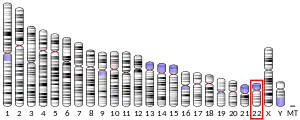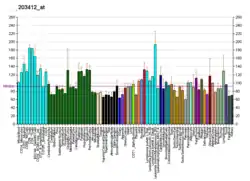| LZTR1 | |||||||||||||||||||||||||||||||||||||||||||||||||||
|---|---|---|---|---|---|---|---|---|---|---|---|---|---|---|---|---|---|---|---|---|---|---|---|---|---|---|---|---|---|---|---|---|---|---|---|---|---|---|---|---|---|---|---|---|---|---|---|---|---|---|---|
| Identifiers | |||||||||||||||||||||||||||||||||||||||||||||||||||
| Aliases | LZTR1, BTBD29, LZTR-1, SWNTS2, NS10, leucine-zipper-like transcription regulator 1, leucine zipper like transcription regulator 1, NS2 | ||||||||||||||||||||||||||||||||||||||||||||||||||
| External IDs | OMIM: 600574 MGI: 1914113 HomoloGene: 4925 GeneCards: LZTR1 | ||||||||||||||||||||||||||||||||||||||||||||||||||
| |||||||||||||||||||||||||||||||||||||||||||||||||||
| |||||||||||||||||||||||||||||||||||||||||||||||||||
| |||||||||||||||||||||||||||||||||||||||||||||||||||
| |||||||||||||||||||||||||||||||||||||||||||||||||||
| |||||||||||||||||||||||||||||||||||||||||||||||||||
| Wikidata | |||||||||||||||||||||||||||||||||||||||||||||||||||
| |||||||||||||||||||||||||||||||||||||||||||||||||||

Leucine-zipper-like transcriptional regulator 1 is a protein that in humans is encoded by the LZTR1 gene.[5][6][7]
The LZTR1 gene provides instructions for making a protein among the class of the superfamily broad complex, tamtrack & brick-a-bac / poxvirus and zinc finger (BTB/POZ). The superfamily of proteins has a wide range of functions including chromatin condensation during conformation of the cell cycle. Other names associated with the LZTR gene are: BTBD29, LZTR-1, NS10, NS2, SWNTS2. This gene encodes a member of the BTB-kelch superfamily. Initially described as a putative transcriptional regulator based on weak homology to members of the basic leucine zipper-like family, the encoded protein subsequently has been shown to localize exclusively to the Golgi network where it may help stabilize the Golgi complex.[7]
Function
Based on its role in several tumor types, the LZTR1 protein is thought to act as a tumor suppressor. Tumor suppressors are proteins that keep cells from growing and dividing too rapidly or in an uncontrolled way. The LZTR1 is a non-specific protein that is found in all cells inside the body. It is believed to be a transcriptional regulator that is typically degraded on apoptotic cells. The protein will be phosphorylated at its tyrosine receptors that will target it for degradation. Intracellularly, LZTR proteins will be found in the Golgi apparatus. Studies suggest that the LZTR1 protein may help stabilize this structure. LTZR1 protein could possibly be associated with the CUL3 ubiquitin ligase (Cullin-Based Ubiquitin Ligase 3) complex that helps function to destroy unneeded proteins in the cell. It has also been observed that LZTR protein will inhibit Ras signaling in the membrane by reducing the affinity of Ras to the membrane. Ras belongs to the family of GTPases that are involved in transcription regulation and activation of Raf enzymes. Raf molecules will cascade phosphorylate other molecules in the body to have a wide impact on a cell. Studies using immunoprecipitation of endogenous LZTR1 followed by Western blotting were used to find the function of the LZTR gene. By trapping LZTR1 complexes from intact mammalian cells, Steklov et al. (2018) identified the guanosine triphosphatase RAS as a substrate for the LZTR1-CUL3 complex.[8]
Gene
The LZTR 1 gene is located on Chromosome 22: more specifically on the long arm at 22q11.21. The gene is approximately 16,768 base pairs long.
Mutations
Studies have found that mutations in the LZTR1 gene were found in malignant cancerous cells in the tumors of patients with glioblastoma. These mutations were found to be somatic, typically caused by environmental factors, and the loss of the LZTR1 gene are seen in the cells that are divided uncontrollably.
DiGeorge Syndrome
DiGeorge syndrome[7] (known as 22q11.2 deletion) caused by a deletion in the 22nd chromosome. Some of the typical symptoms associated with DiGeorge Syndrome are specific facial structure, congenital heart disease, and developmental delays. The implications of LTZR1 mutations were first diagnosed in DiGeorge patients. Studies have showed that deletion or mutation of the LZTR1 are identified in most patients that have been diagnosed with DiGeorge syndrome. The transcriptional regulation capabilities of the LZTR1 gene may play an important role in embryogenesis and is observed in several fetal organs.[9]
Noonan syndrome
Noonan syndrome is an autosomal dominant multisystem disorder characterized by a wide phenotypic spectrum including distinctive facial dysmorphism, postnatal growth retardation, short stature, ectodermal and skeletal defects, congenital heart anomalies, renal anomalies, lymphatic malformations, bleeding difficulties and variable cognitive deficits.
Studies have shown that in 29 genes there were 163 variants in patients with Noonan Syndrome. In the study, using In Silco software, the heterozygous missense mutation of the LZTR1 gene at exon 4 was the most pathogenic.[10] This missense mutation will lead to a substitution of an alanine to valine in the primary structure of amino acid for the LZTR protein.
Schwannomatosis
In patients with schwannomatosis, more than fifty different mutations in the LZTR1 gene are observed.[11] These mutations themselves are not sufficient to cause the disorder, but are typically associated with it. The somatic changes from environmental factors are also seen in patients with schwannomatosis. When the gene is altered, the LTZR protein cannot function properly to regulate the cell cycle by controlling the growth division. This unregulated growth will lead to cancerous growth along the Schwann cells.
References
- 1 2 3 GRCh38: Ensembl release 89: ENSG00000099949 - Ensembl, May 2017
- 1 2 3 GRCm38: Ensembl release 89: ENSMUSG00000022761 - Ensembl, May 2017
- ↑ "Human PubMed Reference:". National Center for Biotechnology Information, U.S. National Library of Medicine.
- ↑ "Mouse PubMed Reference:". National Center for Biotechnology Information, U.S. National Library of Medicine.
- ↑ Kurahashi H, Akagi K, Inazawa J, Ohta T, Niikawa N, Kayatani F, Sano T, Okada S, Nishisho I (Sep 1995). "Isolation and characterization of a novel gene deleted in DiGeorge syndrome". Hum Mol Genet. 4 (4): 541–9. doi:10.1093/hmg/4.4.541. PMID 7633402.
- ↑ Nacak TG, Leptien K, Fellner D, Augustin HG, Kroll J (Feb 2006). "The BTB-kelch protein LZTR-1 is a novel Golgi protein that is degraded upon induction of apoptosis". J Biol Chem. 281 (8): 5065–71. doi:10.1074/jbc.M509073200. PMID 16356934.
- 1 2 3 "Entrez Gene: LZTR1 leucine-zipper-like transcription regulator 1".
- ↑ "OMIM Entry - * 600574 - LEUCINE ZIPPER-LIKE TRANSCRIPTIONAL REGULATOR 1; LZTR1". www.omim.org. Retrieved 2019-04-18.
- ↑ Kurahashi, H.; Akagi, K.; Inazawa, J.; Ohta, T.; Niikawa, N.; Kayatani, F.; Sano, T.; Okada, S.; Nishisho, I. (April 1995). "Isolation and characterization of a novel gene deleted in DiGeorge syndrome". Human Molecular Genetics. 4 (4): 541–549. doi:10.1093/hmg/4.4.541. ISSN 0964-6906. PMID 7633402.
- ↑ Reference, Genetics Home. "Noonan syndrome". Genetics Home Reference. Retrieved 2019-04-18.
- ↑ Piotrowski A, Xie J, Liu YF, Poplawski AB, Gomes AR, Madanecki P, Fu C, Crowley MR, Crossman DK, Armstrong L, Babovic-Vuksanovic D, Bergner A, Blakeley JO, Blumenthal AL, Daniels MS, Feit H, Gardner K, Hurst S, Kobelka C, Lee C, Nagy R, Rauen KA, Slopis JM, Suwannarat P, Westman JA, Zanko A, Korf BR, Messiaen LM (Dec 2013). "Germline loss-of-function mutations in LZTR1 predispose to an inherited disorder of multiple schwannomas". Nat Genet. 46 (2): 182–7. doi:10.1038/ng.2855. PMC 4352302. PMID 24362817.
Further reading
- Kimura K, Wakamatsu A, Suzuki Y, et al. (2006). "Diversification of transcriptional modulation: Large-scale identification and characterization of putative alternative promoters of human genes". Genome Res. 16 (1): 55–65. doi:10.1101/gr.4039406. PMC 1356129. PMID 16344560.
- Barrios-Rodiles M, Brown KR, Ozdamar B, et al. (2005). "High-throughput mapping of a dynamic signaling network in mammalian cells". Science. 307 (5715): 1621–5. Bibcode:2005Sci...307.1621B. doi:10.1126/science.1105776. PMID 15761153. S2CID 39457788.
- Gerhard DS, Wagner L, Feingold EA, et al. (2004). "The Status, Quality, and Expansion of the NIH Full-Length cDNA Project: The Mammalian Gene Collection (MGC)". Genome Res. 14 (10B): 2121–7. doi:10.1101/gr.2596504. PMC 528928. PMID 15489334.
- Strausberg RL, Feingold EA, Grouse LH, et al. (2003). "Generation and initial analysis of more than 15,000 full-length human and mouse cDNA sequences". Proc. Natl. Acad. Sci. U.S.A. 99 (26): 16899–903. Bibcode:2002PNAS...9916899M. doi:10.1073/pnas.242603899. PMC 139241. PMID 12477932.
- Yu W, Andersson B, Worley KC, et al. (1997). "Large-Scale Concatenation cDNA Sequencing". Genome Res. 7 (4): 353–8. doi:10.1101/gr.7.4.353. PMC 139146. PMID 9110174.
- Andersson B, Wentland MA, Ricafrente JY, et al. (1996). "A "double adaptor" method for improved shotgun library construction". Anal. Biochem. 236 (1): 107–13. doi:10.1006/abio.1996.0138. PMID 8619474.




